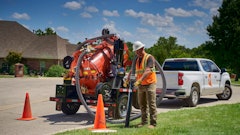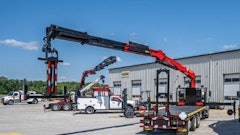
By Gregg Wartgow, Contributing Editor
In today’s labor market, many companies are doing everything they can to attract employees. Social media is proving to be an effective part of an overall employee recruitment campaign. In fact, there is living proof that an entire workforce comprised of dozens of employees can be assembled as a result of social media outreach.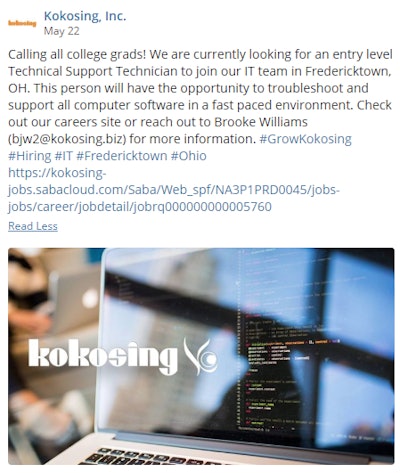 An example of a Kokosing Construction Company Facebook post targeting recent college grads for an IT position.
An example of a Kokosing Construction Company Facebook post targeting recent college grads for an IT position.
With social media, though, there are never any guarantees. A company shouldn’t assume that one creative post will initiate an avalanche of job applications. Recruiting through social media takes time and commitment—just as any marketing effort does.
“A lot depends on company size, brand name recognition, and how much the company has invested in growing its social media influence,” says Brett Good, senior district president with Robert Half, a specialized staffing and consulting services company. “Companies that aren’t active on various social media platforms could risk getting left behind.”
Build your brand to attract employees
Social media can be effective at reaching younger workers such as students. It can help when posts are designed to support other recruiting tactics.
Kokosing Construction Company (Kokosing), based in Columbus, Ohio, uses social media to prime the waters through college co-op, career center and high school STEM (science, technology, engineering and math) programs. For instance, Kokosing uses social media to help get the word out about job fairs it attends at different schools. An example of a Kokosing Construction Company LinkedIn post aimed at recruiting additional project engineers.
An example of a Kokosing Construction Company LinkedIn post aimed at recruiting additional project engineers.
Students aren’t the only job candidates that can be found through social media. People of all ages are using platforms such as Facebook, LinkedIn, Instagram and Twitter. Some are out of work and seeking their next opportunity. Some are currently employed but looking for a better opportunity.
“A construction company may be able to attract a highly skilled yet currently employed professional, also known as a passive candidate, who may decide to explore employment opportunities at the company as a result of the firm's social media activity or finding the company from a search,” Good says.
That is why a consistent social media presence is vital to a company’s ongoing recruitment effort. Well-designed posts help create excitement around a company, positioning it as a great place to build a career.
“Candidates today want to work at places with an organizational culture that aligns with their own,” Good says. A social media post could highlight a company’s commitment to philanthropy and volunteerism. Posts could also highlight the achievements of individual teams or employees, helping to showcase how a company appreciates, recognizes and rewards hard work.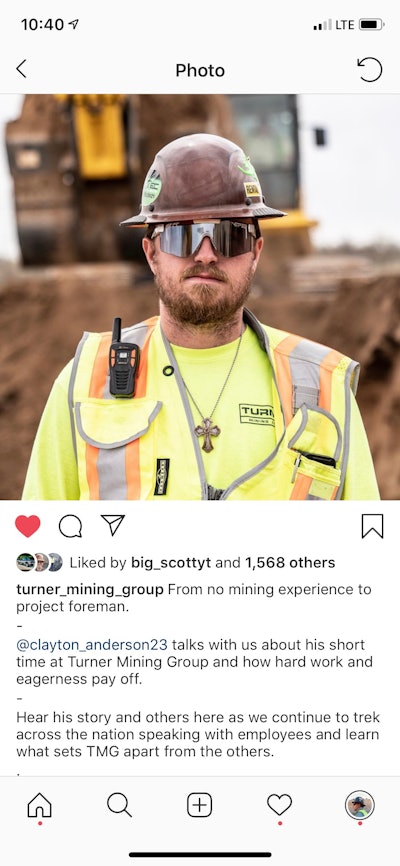 Turner Mining Group uses Facebook, LinkedIn and Instagram to offer a behind-the-curtain look at the young, growing company that attracts today's workers.
Turner Mining Group uses Facebook, LinkedIn and Instagram to offer a behind-the-curtain look at the young, growing company that attracts today's workers.
Given how difficult it has been to find good employees, some companies are reluctant to share their secrets. Not Keaton Turner, president of Turner Mining Group based in Bloomington, Ind. “Our company is actually an open book,” Turner says. “Everything we put on social media is a look behind the curtain at what we’re doing and how we’re doing it.”
It is that open-book mentality that creates some of the allure around Turner Mining. The company has only been in business for a couple of years. Its rapid growth has been impressive, expanding from roughly 20 employees last year to roughly 250 today. Turner says he could not have built up his company as quickly as he has without the help of social media. “Almost every single one of our hires has come through social media,” Turner relates. That includes a handful of in-house technicians and a fleet manager.
Turner Mining Group does publish posts specific to job openings. But it is those general, everyday posts that have helped create that allure and build up a following.
“People appreciate others who are real, honest and transparent,” Turner says. “That’s how we’re trying to win. We have good days and bad days like everyone else. When people see that real side of things, it’s something different and interesting.”
Prior to starting his own company in 2017, Turner worked for a mass excavation company for roughly 10 years. He saw an opportunity to create a highly professional, service-focused company in the mining industry.
“I’d heard that the average age in the mining industry was 52,” Turner says. “Then I thought about how many young people are looking for good jobs, and that college enrollment has been going down. Many of these young people like to be outdoors and work with their hands. I started thinking about how we could get more young people into the mining industry.”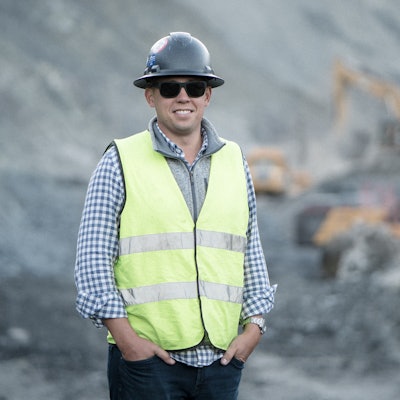 Keaton Turner started Turner Mining Group in 2017. He says he could not have built up his company so quickly without the help of social media.
Keaton Turner started Turner Mining Group in 2017. He says he could not have built up his company so quickly without the help of social media.
That thinking quickly turned into action—action that took place almost exclusively on social media. The result is an employee base with an average age of 27, nearly half the industry average. Turner himself is 30.
In assembling his workforce, Turner didn’t want to require industry experience. He wanted to find raw talent and passion. “Experience is great, but we want someone we can mold into the way we think and how we do things,” Turner says. “We also employ many industry veterans who help pour knowledge into our younger employees.”
Turner says the refreshing thing about social media is that he has been able to reach people with a variety of backgrounds. He enjoys seeing people like and comment on his posts who have no background in mining or heavy equipment.
“That means we’re bringing more people to mining that otherwise wouldn’t have,” Turner says. “It’s not like we can pay them more of offer some kind of great job security. What we are offering is an ability to drive change and make a big impact in an exciting company.”
Keys to capturing attention
Turner Mining uses Facebook, LinkedIn and Instagram. Kokosing has been focusing its efforts on Facebook and LinkedIn. Facebook has been useful for more of the field-type positions and entry-level managers. LinkedIn is effective at reaching potential mid-management and executive-level staff.
“Our posts feature the available position and the region the position is in,” says Kim Fantine, marketing manager at Kokosing. “If we have a new project in Cincinnati, for example, our post will include a picture of a construction site with copy that includes the number and types of open positions. The post will also include a link so followers can apply directly. The same type of content is posted for office-based positions.”
The post itself needs to be fairly brief, yet attention-getting. As Fantine points out, you only have a few words to grab someone’s attention while they are scrolling through their social media feed. Having a clear headline and eye-catching graphic is essential.
When a post does capture attention, the nice thing with social media is the practice of sharing. “Our Facebook and LinkedIn followers are excellent at sharing positions that may be relevant to their friends and connections,” Fantine says. “This sub-network is invaluable. A follower of our Facebook or LinkedIn page might not be personally interested in a job opening we posted, but might share it with their own friends and followers.”
Neither Turner Mining Group or Kokosing have spent a dime on social media advertising. Everything happens through organic sharing and word of mouth.
Turner is a firm believer that in order to gain traction organically, you have to capture people’s attention. From the very first day his young company began operations, Turner was pouring into Facebook, Instagram and LinkedIn. “We’d stick a camera in an employee’s face out on a jobsite,” Turner says. “Our posts weren’t salesy at all. They were real. It’s almost like reading and watching an autobiography of Turner Mining as our company evolves. People like that.”
Two years and 250 employees later, Turner has recently hired a marketing content director who oversees the company’s social media pages. Turner continues to post regularly on his personal accounts. His goal is to spark conversations around topics not commonly seen in business circles today. He strives to be honest, real and a bit edgy.
“One of my recent LinkedIn posts was about how being the first one to work and the last to leave doesn’t really impress your boss,” Turner says. “My point is that a person needs to do more than just show up. If you want people to really feel your impact, you can do things like eliminate drama from your team, hold people accountable to the true vision of the company, spread positivity and make work fun for everyone. Making an impact is about more than just logging payroll hours. When you say something like that, it gets people’s attention.”
Generating and screening applications
So your social media posts have captured some attention. Now what?
At Kokosing, the “call to action” is for interested job candidates to click through to the company website to view the complete job description and ultimately start the application process.
If it’s a more general post designed to support other outreach activities, such as a job fair, Kokosing tends to rely on organic sharing. If the post is for a vacant position, the post will be more specific about job location.
“Hashtags are a great tool, particularly when trying to fill positions in certain locations,” Fantine says. Using #Cincinnati, for example, can help capture the attention of local people and foster additional targeted sharing and search results. “Hashtags help followers find the posts that they are looking for and maximize their time, especially on Facebook,” Fantine adds.
One challenge with promoting job openings on social media is the potential influx of unqualified applicants. Sometimes it’s someone who wants any job, not necessarily the job you posted. That said, it’s still somebody interested in working.
“Encouraging potential team members to visit our website exposes interested parties to all of our open positions and additional company information,” Fantine says.
A couple years ago when his company was first getting started, Turner had to respond to all job inquiries. Now his $100 million company has a human resources department. A dedicated HR employee responds to social media inquiries and spearheads the employee onboarding process. Turner continues to respond to all comments directed toward his personal social media accounts.
Don’t forget about employee retention
It’s important to note that social media can be used for not only recruiting new employees, but also retaining existing staff. For Kokosing, common posts include employees who’ve successfully completed certain trainings, attained accreditations or won awards. Kokosing will also post information on projects that were recently landed, as well as community outreach efforts.
Turner Mining Group posts similar types of things. “Our company operates coast to coast,” Turner points out. “Regular postings help share information across the company and foster that family type of culture.”
As pointed out earlier, there are no guarantees with social media. A lot of great things can happen organically, but it’s not always easy to gain the necessary traction. Paid campaigns, i.e. boosted posts, can prove to be a good investment if done correctly.
“It makes sense to look at your top-performing content, which is an indication of what your audience appreciates, and boost that content with some paid promotion,” Good says. “A surprisingly small budget, even $25, can get your content in front of a large number of people. Also, targeting the perfect demographic is often easier with paid advertising.”
Social media companies such as Facebook and LinkedIn possess a treasure trove of user data. A boosted post can be targeted to certain people based on demographics such as location and age, as well as interests. But with the right approach, companies can leverage social media to help recruit new employees as well as retain the ones they already have—all without spending a dime.















